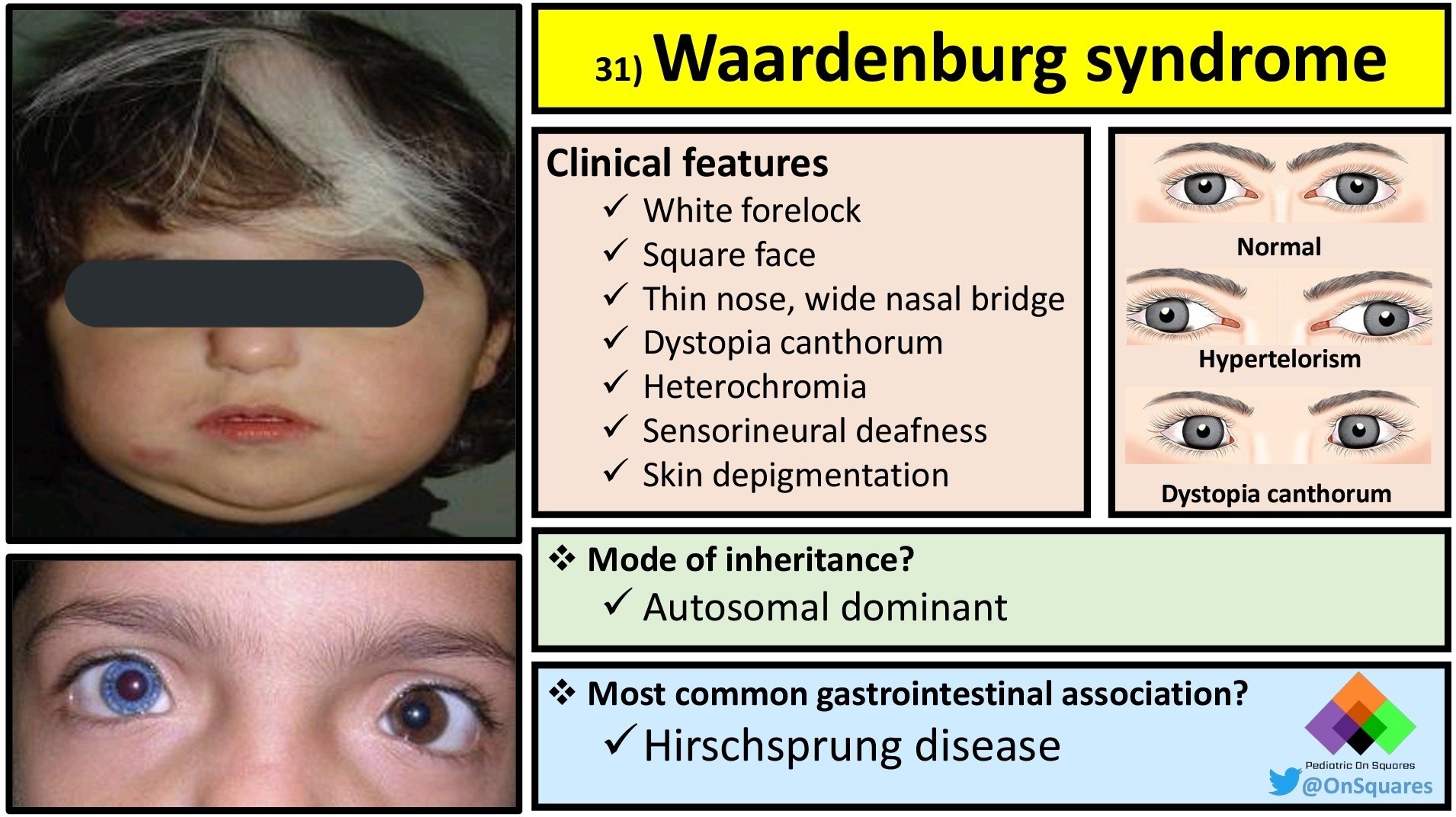Who Else Wants Tips About What Is Waardenburg Syndrome Graphic Bobs Hairstyle

It does not affect life expectancy.
What is waardenburg syndrome. During embryogenesis, there is an abnormal distribution of melanocytes, which results in patchy areas of depigmentation. Ws is classified into four clinical and genetic phenotypes. Waardenburg syndrome (ws) is a group of genetic conditions characterized by varying degrees of hearing loss and differences in the coloring (pigmentation) of the eyes, hair, and skin.
Waardenburg syndrome is a group of genetic conditions inherited in an autosomal dominant fashion. The range and severity of associated symptoms and findings may vary greatly from case to case. Waardenburg syndrome is a neurocristopathy due to gene mutations which result in abnormal neural crest differentiation during embryonic development.
The main characteristics of waardenburg syndrome (ws) include: Various other features may also be present. Waardenburg syndrome is a genetic disorder that may be evident at birth (congenital).
Waardenburg syndrome (also waardenburg’s) is a rare genetic disorder. Although most people with waardenburg syndrome have normal hearing, moderate to profound hearing loss can occur in one or both ears. Waardenburg syndrome (ws) is a disorder characterized by varying degrees of deafness and minor defects in structures arising from neural crest, including pigmentation anomalies of eyes, hair, and skin.
And some degree of cochlear deafness. There are four main types. Waardenburg syndrome is a group of genetic conditions that can cause hearing loss and changes in coloring (pigmentation) of the hair, skin, and eyes.
A wide bridge of the nose; Signs and symptoms can vary both within and between families. Signs and symptoms can vary both within and between families.
Waardenburg syndrome (ws) is named after the dutch ophthalmologist petrus johannes waardenburg, who, in 1947, first described a patient with hearing loss, dystopia canthorum (ie, lateral. Mutations in a number of different genes can cause waardenburg syndrome, with some differences in. Waardenburg syndrome is divided into four subtypes according to the characteristics and type of inheritance.
Waardenburg syndrome type 1 is a genetic condition characterized by eyes that appear widely spaced, congenital hearing loss, and patchy pigment disturbances of the iris, hair and skin. Waardenburg syndrome is a group of genetic conditions that can produce sensorineural hearing loss, changes in pigmentation of the hair, skin, and eyes, craniofacial alterations, musculoskeletal limb abnormalities, and hirschsprung disease. A very rare subtype of waardenburg syndrome (ws) that is characterized by limb anomalies in association with congenital hearing loss, minor defects in structures arising from neural crest, resulting in pigmentation anomalies of eyes, hair, and skin.
Waardenburg syndrome is usually caused by genetic mutations inherited from one or both parents or occurs spontaneously. Genetic changes in the pax3 gene cause the. Discolored hair, skin, and eyes.
Waardenburg syndrome is a rare genetic condition that affects the color of a person’s skin, hair, and eyes. Symptoms include hearing loss, fused digits, and changes in the coloring of the hair, skin, and eyes. The syndrome involves deafness and pale skin, hair, and eye color.














![Waardenburg Syndrome [General Pediatrics] PrepLadder NEET SS YouTube](https://i.ytimg.com/vi/j7dc3GGTxtM/maxresdefault.jpg)






